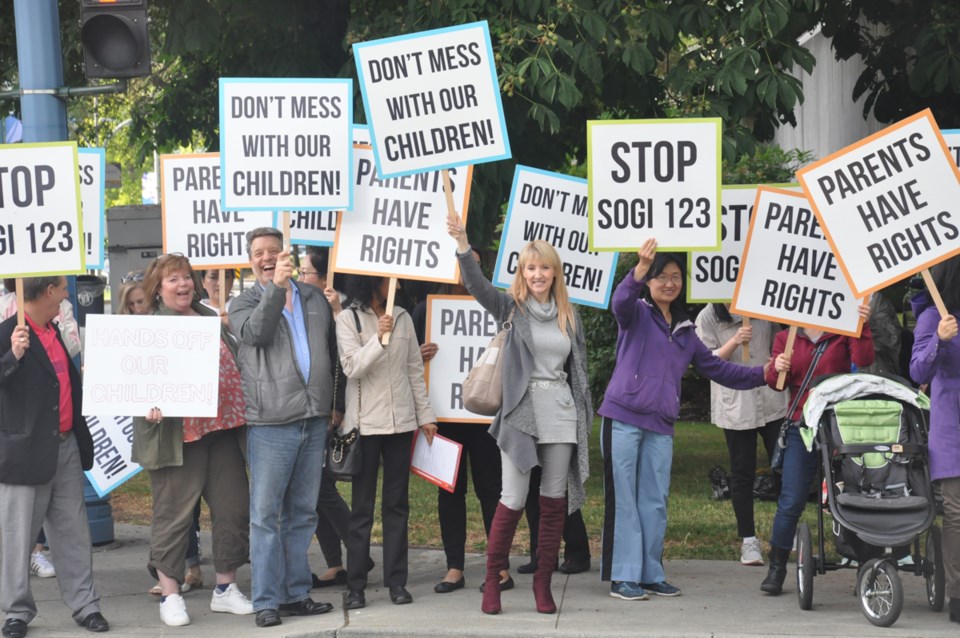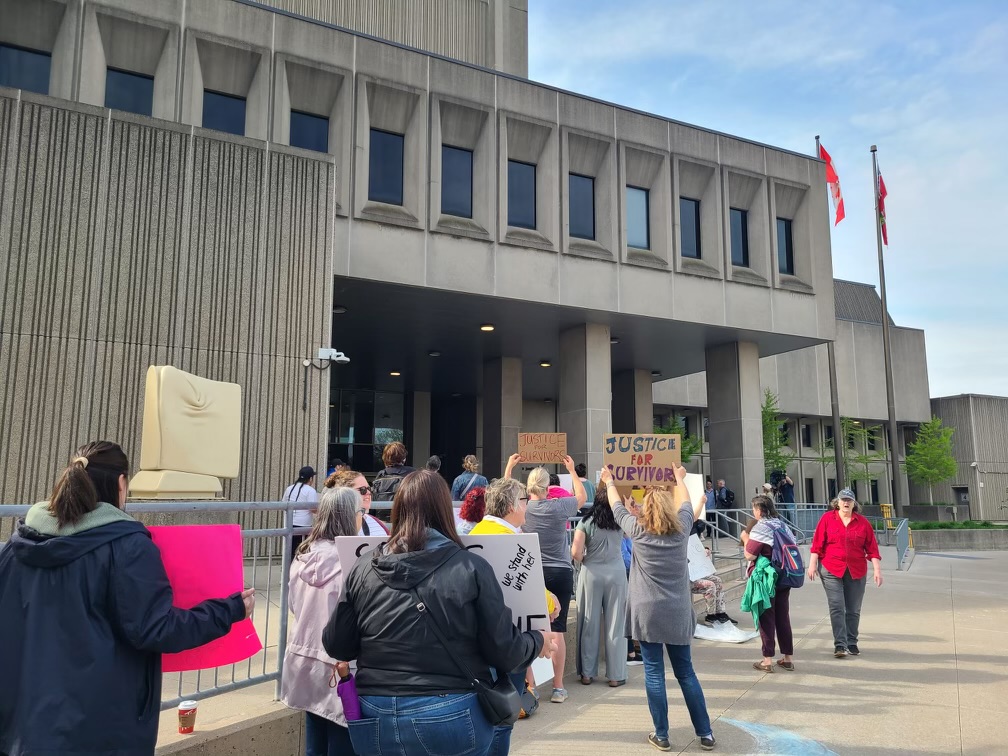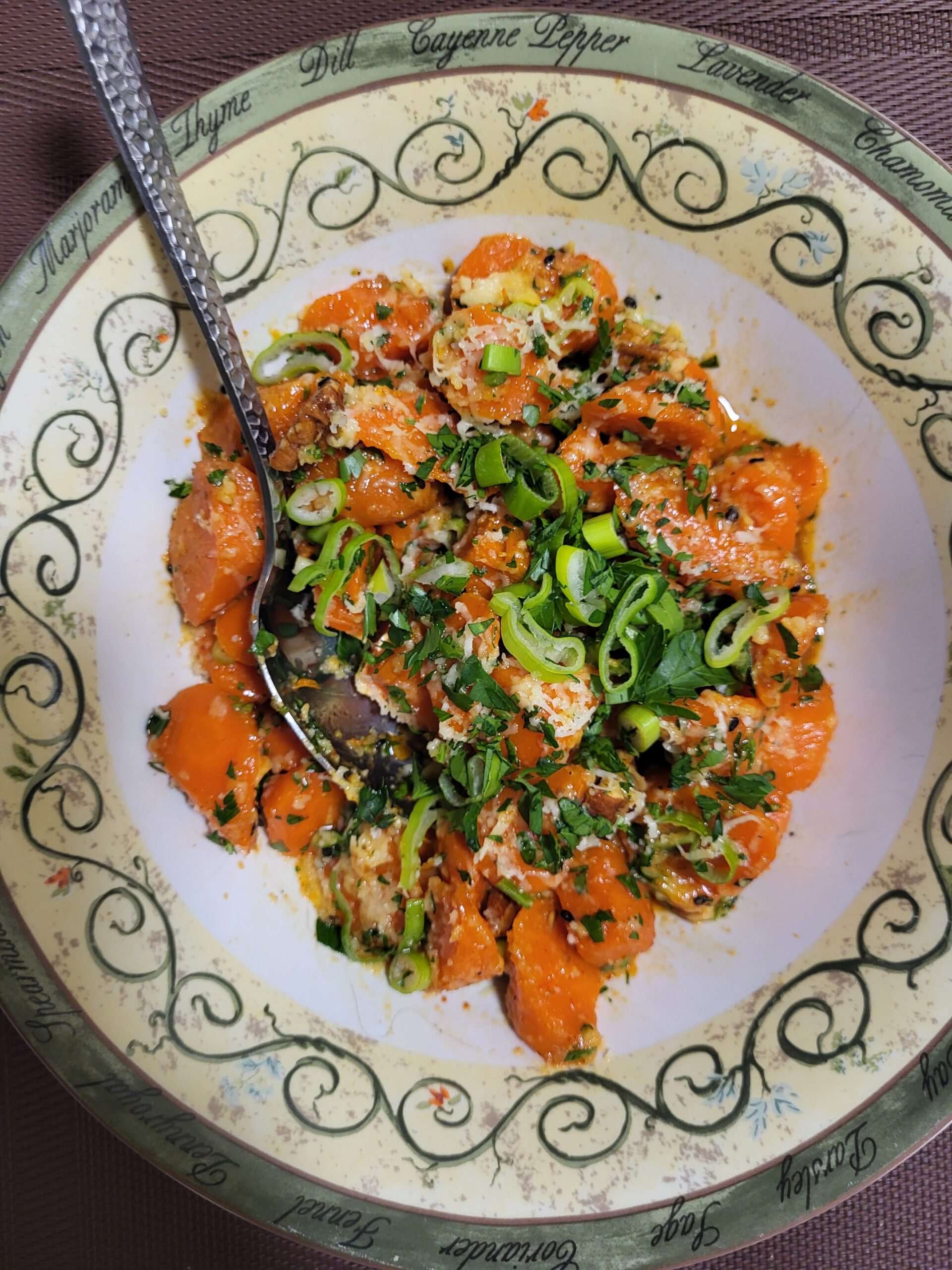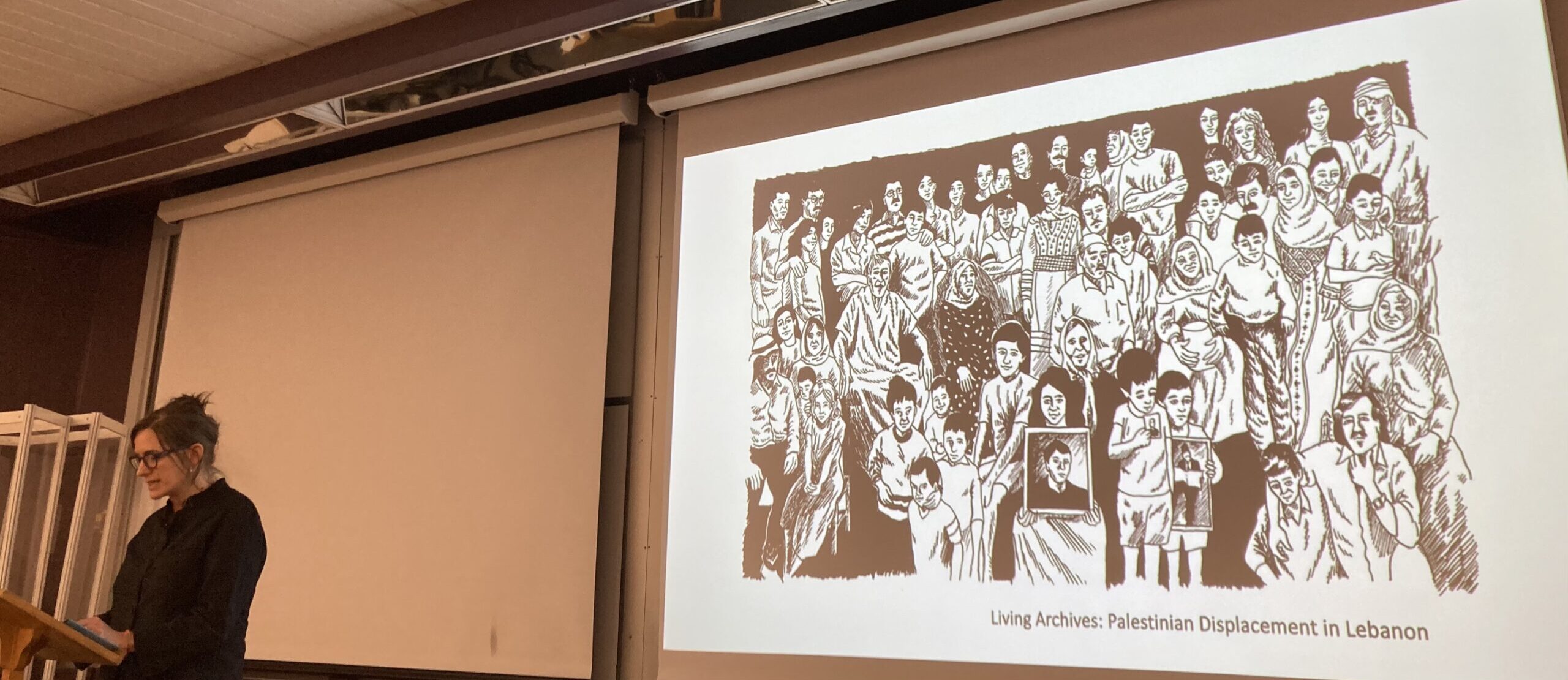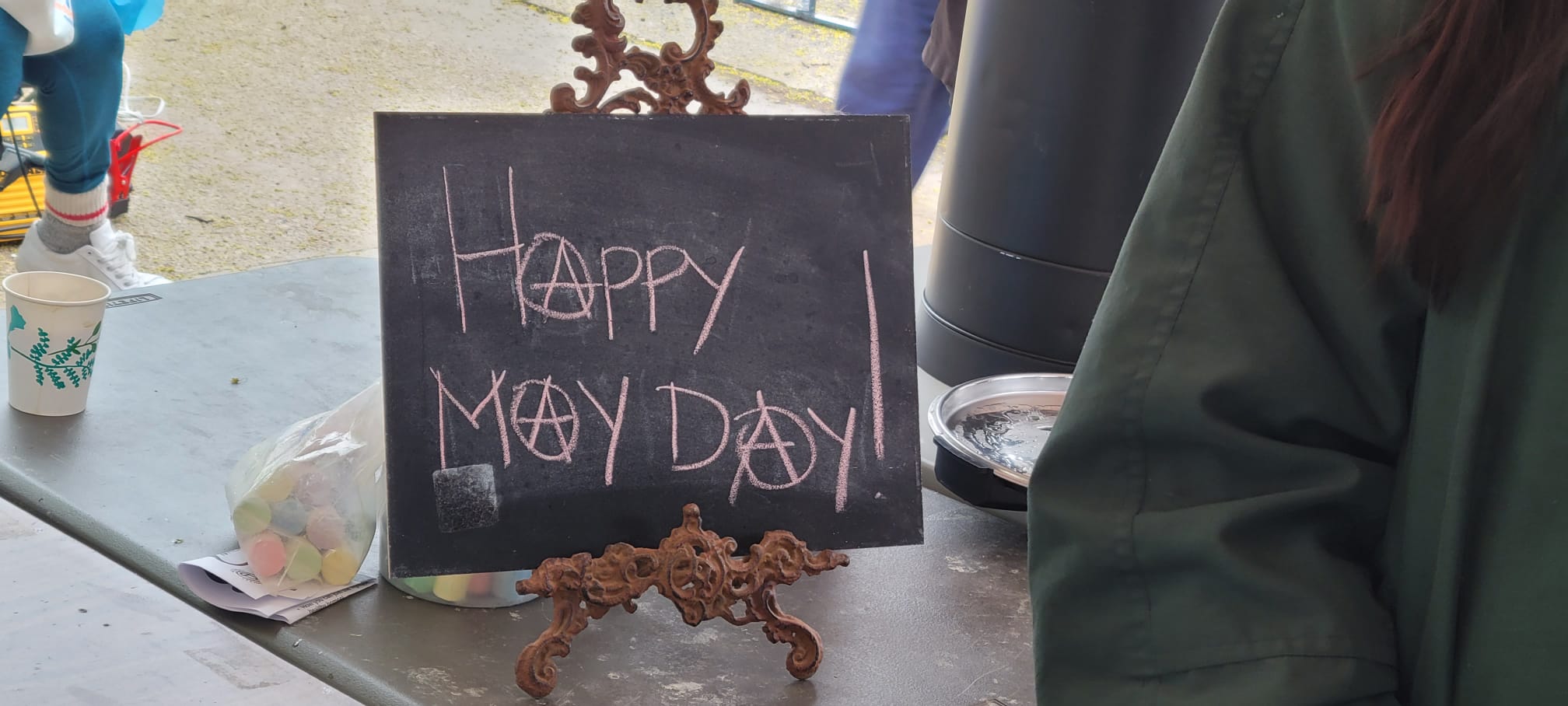Tatreez: Weaving Palestinian history
Incé Husain
Sat August 24, 2024

Originally published at NB Media Coop on February 11th, 2024
The Palestinian thobe fills my phone screen. It is black, originally indigo-dyed. It flares with orange, red, and jewel-coloured embroidery. The chest-piece is laden with intricate triangles, zigzags, and flower-like motifs. The front of the skirt bursts with a panel of squares bearing stars. The sleeves and sides are rich with greens, blues, and pinks that twine into branch-like patterns or descend in diamonds. The back is streaked with orange panels that border arching embroidery. In its entirety, the thobe is mesmerizing in the embroidery’s heaviness and vibrancy, handmade in 1920 from the village of Al-Masmiyya al-Kabira or el-Na’ani in historical Palestine.
Neither of these villages exist anymore, ethnically cleansed by Israeli forces in 1948. The thobe laid in the British Museum from 1989 to 1991, and can be seen online at the British museum’s official site.
Baraa Abuzayed, an embroiderer, learned that three of her grandparents were displaced from the village where this thobe originated. She began recreating the thobe for her Master’s thesis, in which she argues that the creation of thobes is inseparable from Palestinian survival.
“The village that this thobe comes from, it does not exist on a map, it is no longer there. But that thobe exists and it exists from that place, so that place does still exist through material history and through people who come from it,” says Abuzayed. “I recreated it saying that thobes have the power to represent and to give meaning and give life to places and to land that was stolen.”
The needlework on the thobe is “tatreez,” traditional Palestinian embroidery distinguished by unique motifs embodying Palestinian culture, history, and resistance. Abuzayed embroiders the thobe at a speed of about a hundred stitches every minute; the thobe’s chest-piece has 45,000 stitches and the back has 55,000 stitches. She was mentored by Samia Ayyash from The Thobe Project, who teaches historical thobe-making.
“I felt like I needed to touch it, to feel it, to be able to understand how all of this is created, how all of this is manifested,” says Abuzayed of creating the thobe. “I felt like, to be able to understand what I’m researching, I had to create it.”
Abuzayed first learned tatreez from her mother at the age of ten, and her childhood was full of embroidery with her mother and sisters. She decided to pursue research on tatreez in undergrad, when she had taken a global development course that discussed basket-making; she felt a synchrony between basket-making and Palestinian embroidery in its collectivity and resourcefulness.
“Every course I had, I felt like I could easily relate it to Palestine,” says Abuzayed. “For me, Palestine is the epitome of every single topic that we can think of. It covers feminist issues, development issues, politics, art, liberation – it covers it all.”
While in undergrad, Abuzayed began teaching tatreez workshops. She opened each workshop with a presentation detailing the political significance of tatreez. Her presentation slides were lush with thobes from major cities and tatreez depicting villages lost to Israeli occupation.
“Tatreez symbolizes so much more than just a motif. Because the patterns, especially when the patterns start to symbolize places that no longer exist on the map – that’s when you know that it’s something that needs to continue to be remembered and taught. It’s resistance knowing it and learning it.”
She shared the “Intifada Dress,” a thobe that emerged during the First Intifada, a Palestinian uprising from 1987 to 1993 against the Israeli occupation. In 1967, the Palestinian flag had been banned by Israel; women began to embroider it on thobes during the uprising.
“Women were embroidering the flags on their clothes, and the Dome of the Rock. They were also embroidering guns, they were embroidering slogans, and things like that.”
Abuzayed’s workshops provide 14-count and 11-count fabric that easily show holes for stitches. She shares motifs from the book Palestinian Embroidery Motifs: A Treasury of Stitches from 1859-1950. Learners select a motif, photograph it, and Abuzayed teaches the stitches.
On February 8, Abuzayed ran a tatreez workshop in London, Ontario. The cap was sixty people; sixty came. Abuzayed’s voice reverberated through the workshop room as she recounted the history of Palestinian thobes. Surrounded by snacks, threads, and needles, women gathered in groups and began stitching, laughing, sharing stories. Abuzayed and her sister flocked from group to group, teaching the stitches and greeting all who came. On February 15, she will run a workshop at Queen’s University.
“We used to host multiple workshops within a semester, and my sisters would also come and help me teach. It was nice because a lot of people would get so into it and they would complete motifs,” says Abuzayed. “It’s lovely to have people come and not be scared to try.”
Some common tatreez motifs are cypress trees and the Bethlehem moon.
The Bethlehem moon shows a cross that unfurls, star-like, into eight cross-stitched wisps.
Cypress trees show a symmetrical, elongating motif that branches into repeating patterns framing the figure of the tree. Unique cypress tree tatreez arises from different cities.
The Gaza cypress tree, for example, starts with a checkered pattern that gives way to a slimming triangle lined with small squares; the Beer Sabi cypress tree is a series of stacked triangles bordered by arrow-like patterns; and the Ramallah cypress tree begins from a small cross that rises in a triangle and narrows into wisps.
Abuzayed’s favourite motif is the coffee bean from Gaza, a stalk sprouting parallelogram leaves. Her grandmother had a thobe with sleeves embroidered with the coffee bean.
“I created it so many times over and over again. I kept creating it, gifting it to people, making it as a bookmark.”
Though tatreez today is rich with colour, Abuzayed says that traditional tatreez was red. Tatreez threads were originally hand-dyed with sumac, a spice from the red berries of sumac plants indigenous to Palestine. As geopolitics shifted, multicoloured DMC threads from France were imported into Palestine and replaced thread-dyeing.
Traditional tatreez also differed in its process. Today, waste canvas – a fabric studded with holes for easy stitching – is placed on top of the cloth to be embroidered with tatreez and removed when embroidery is finished. Historically, tatreez was done with even-weave fabric, which has distinguishable holes for cross-stitch. Abuzayed adds that fabric was never wasted.
“Our ancestors were very resourceful,” says Abuzayed. “Every single piece that they cut would be used for the thobe.”
Tatreez today is found in digital form, too. Mugs, coasters, shirts, and more bear digitally-printed tatreez motifs, expanding the scope of accessories that tatreez traditionally encompassed. Abuzayed has mixed feelings about this.
“I don’t like (digital tatreez) that much to be honest, because it does remove its original context and its original form – on dresses, on pillowcase, on napkins, and on headpieces. The fact that that’s not done much is kind of sad,” says Abuzayed. “But I don’t blame the fact that people want to do (digital tatreez) because it’s one way that they want to feel closer to home and to Palestine. Especially when you don’t know how to embroider, it’s a way to hold something close knowing that it’s a part of your heritage.”
With global awareness of Palestine growing, tatreez flourishes across the world. Human rights activists embrace tatreez as an act of solidarity. Tatreez artists create new patterns to capture current moments in history, embroidering motifs such as Handala or the watermelon. Handala, a drawing of a refugee with his hands clasped behind his back, is a symbol of Palestinian defiance. The watermelon – bearing the black, white, green, and red colours of the Palestinian flag – emerged as a resistance symbol when Israel criminalized the Palestinian flag.
Digital tatreez by graphic designer Maya Amer recently went viral on Instagram. It featured a chest-piece of a traditional thobe recreated in green, yellow, red, pink, and gray; each stitch depicted a Palestinian who had been martyred from October 7th to October 31st. Green stitches depicted women, red stitches depicted girls, pink stitches depicted boys, yellow stitches depicted men, and gray stitches depicted those that could not be identified. The piece flares with red and pink.
In the wake of the violence in Palestine that has exceeded a hundred days and 28,000 deaths, Abuzayed gravitates to tatreez to calm her mind while still commemorating Palestine. She recalls feeling powerful when she first began working on the thobe for her Master’s thesis; it filled her with a deep connection to the ancestral homeland her family is denied.
“Embroidery has become part of what I do,” says Abuzayed. “It was such an amazing feeling just knowing that I was creating something for myself, but also something for my family, and to teach them about it, and to bring something closer to home that comes from the home that we are denied. That feeling alone gave me so much power.”

